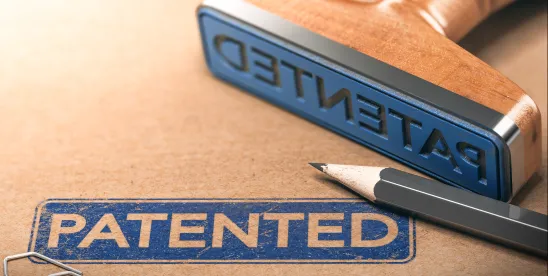A recent Federal Circuit decision provided some additional insight into exceptional case determinations in patent infringement disputes. In Realtime Adaptive Streaming v. Sling TV, the Federal Circuit reviewed an award of attorneys’ fees granted to DISH and related Sling entities (collectively, DISH) by the United States District Court for the District of Colorado. Realtime Adaptive Streaming LLC v. Sling TV, L.L.C. , Fed. Cir., 23-1035, vacated 8/23/24.
History of Events
On August 31, 2017, Realtime Adaptive Streaming LLC sued DISH and related Sling entities for alleged infringement of U.S. Patent Nos. 8,275,897; 8,867,610; and 8,934,535. Early in the case, the Defendants filed motions to dismiss and motions for judgment on the pleadings, asking the district court to find the asserted claims invalid under § 101. The district court denied these motions.
In October 2018, the Central District of California issued an order finding Claims 15-30 of the ‘535 patent ineligible under § 101 (Google decision). In December 2018, a magistrate judge in the District of Delaware found Claim 15 of the ‘535 patent ineligible (Netflix decision). Shortly after that, the district court stayed the infringement litigation pending IPR proceedings.
During the IPR proceedings claims 1-14 of the ‘535 patent were found to be unpatentable on obviousness grounds. Realtime then withdrew its claims under the ‘535 patent.
The district court lifted the stay on January 15, 2021. Shortly after stay was lifted the USPTO rejected claim 1 of the ‘610 patent as obvious as part of an ex parte reexamination.
In February 2021, DISH sent Realtime a letter conveying its belief the ‘610 patent was invalid and expressing its intention to seek attorneys’ fees.
On July 31, 2021, the district court granted DISH’s motion for summary judgment of invalidity, finding Claims 1, 2, 6, 8-14, 16, and 18 of the ‘610 patent directed to ineligible subject matter under § 101 and ultimately granted DISH’s Motion for Attorneys’ Fees, highlighting six “red flags” that Realtime’s case was fatally flawed.
On May 11, 2023, the Federal Circuit affirmed the district court’s order concluding that the asserted claims of the ‘610 patent are directed to ineligible subject matter under § 101. On August 23, 2024, it issued its opinion on the appeal of the attorneys’ fees award under 35 U.S.C. § 285, vacating the district court’s opinion and remanding for further consideration.
Federal Circuit’s Analysis of the District Court’s Red Flags
The Federal Circuit reviewed each of the six red flags identified by the district court:
a) Google and Netflix decisions: The Federal Circuit agreed that these decisions, which found claims of a related patent ineligible, were significant red flags.
b) Adaptive Streaming decision: The Federal Circuit found that the district court erred in treating this as a red flag, as it involved different technology and lacked sufficient analysis to show the patent infringement claim was exceptionally meritless.
c) Board’s invalidation of the ‘535 patent: The Federal Circuit found that the district court failed to adequately explain how these decisions supported a finding of exceptionality.
d) Reexamination of the ‘610 patent: The Federal Circuit found that the district court’s analysis was lacking and failed to adequately explain how these decisions supported a finding of exceptionality.
e) DISH’s notice letter: The Federal Circuit found that the letter alone was not sufficient to trigger § 285 and support an exceptionality finding.
f) Expert analysis evidence: The Federal Circuit found that the district court erred in its justification of Dr. Bovik’s opinions as a red flag.
Notice Letter Insufficient
The notice letter from DISH was not considered sufficient to trigger § 285 and support an exceptionality finding for several reasons:
- Limited analysis: The letter contained only two paragraphs dedicated to discussing the ineligibility of the asserted claims of the ‘610 patent. These paragraphs were described as “conspicuously short” and “riddled with conclusory statements” asserting similarities between the ‘610 patent claims and those of the ‘535 patent and the Adaptive Streaming patent.
- Lack of specific comparisons: The letter did not provide any further analysis or specific comparisons to support its assertions about the similarities between the patents.
- Insufficient notice: The court found that simply being on notice of adverse case law and the possibility that opposing counsel would pursue § 285 fees does not amount to clear notice that the ‘610 claims were invalid.
- Potential for abuse: The court noted that if such a notice letter were sufficient to trigger § 285, then every party would send such a letter setting forth its complaints at the early stages of litigation to ensure that—if it prevailed—it would be entitled to attorneys’ fees.
- Lack of follow-up: DISH did not follow up regarding its allegations after Realtime responded to the notice letter eleven days later.
The Federal Circuit concluded that without more substantive analysis or specific comparisons, the notice letter alone was not enough to put the patentee on notice that its arguments regarding ineligibility were so meritless as to amount to an exceptional case.
Conclusion
In conclusion, while the Federal Circuit agreed that some of the red flags identified by the district court were valid considerations, it found that others were not properly justified or explained. As a result, the court vacated the attorneys’ fees award and remanded the case for reconsideration consistent with its opinion.
The findings regarding the notice letter are not surprising. Patent cases may take a long time to develop and typically include an enormous amount of information. Both parties have a limited amount of information early in the case and so positions are staked out carefully. The court did not give an indication of what would be necessary to serve as adequate notice of the defects of a plaintiff’s patent assertion. It remains to be seen how the court treats the exceptional case analysis in light of the remand guidance from the Federal Circuit.



 />i
/>i
